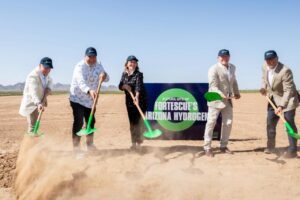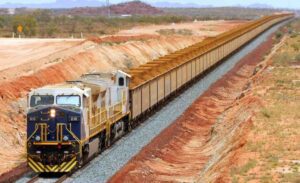A massive green hydrogen project based around existing Western Australia hydro and new giga-scale solar – and which aims to be the first in Australia to export green ammonia at scale – has won federal government funding from Arena.
The Australian Renewable Energy Agency on Tuesday announced it has awarded a $1,666,701 grant to Aboriginal Clean Energy Partnership (ACEP) to support Phase 1 of the feasibility study for the East Kimberley Clean Energy and Hydrogen Project.
Arena says the First Nations-led feasibility study will start straightaway and take around five months to complete. If the project is proven feasible, the plan is to build 1,000 MW of solar and 850 MW of electrolysis capacity on lands owned by the indigenous MG Corporation and to produce 50,000 tonnes a year of renewable hydrogen.
The hydrogen would then be transported by underground pipeline to Balanggarra Country in Wyndham and combined with energy from the existing Ord Hydro Power station to produce around 250,000 tonnes a year of green ammonia for export to Asia as well as for domestic use.
Advisory and investment group Pollination, which is leading the project, says the $1.6 million grant – while a drop in the ocean of what stands to be a capital cost of between $2.7-3.2 billion – is significant for the message of government support it sends to the broader market.
“This kind of partnership will significantly de-risk this project, making it faster, smoother and more attractive for investment,” said Pollination’s head of projects Rob Grant in a statement on Tuesday.
“Arena’s show of confidence in the project and the partnership is an important step for progressing what will be a development of national significance.”
For Arena, the project is also worth backing for its use of what Pollination describes as a “world-first” model in which Traditional Owners are engaged as shareholders and not just stakeholders, for the course of the project.
The Aboriginal Clean Energy Partnership, or ACEP, was formed in 2022 as a joint venture between native title representative holders Yawoorroong Miriuwung Gajerrong Yirrgeb Noong Dawang Corporation (MG Corporation), Balanggarra Ventures Ltd (Balanggarra), and Kimberley Land Council Aboriginal Corporation (KLC) alongside Pollination.
Each partner holds an equal 25 per cent share in the East Kimberley Clean Energy and Hydrogen Project through a structure created to oversee all aspects of development.
“Arena is working with ACEP to explore how First Nations communities can have a greater say and a greater stake in Australia’s renewable hydrogen ambitions,” said the agency’s CEO Darren Miller.
“This project will pave the way for First Nations-led renewable energy developments and Arena will be working to ensure the lessons we learn from East Kimberley inform future projects.”
MG Corp executive chair Lawford Benning says the partnership is a way for the Miriuwung, Gajerrong and Balanggarra people to participate in the transition to a cleaner way of using their natural resources in the East Kimberley.
“We can’t do this on our own. It takes great leadership and support of our federal government in collaboration with our Western Australian government to back us in getting this right,” Benning said on Tuesday.
“The old ways of making energy and of doing development have often not been good for First Nations people,” a spokesperson from Balanggarra adds. “We know there is a better way to do this and we are excited to be leading it.”










